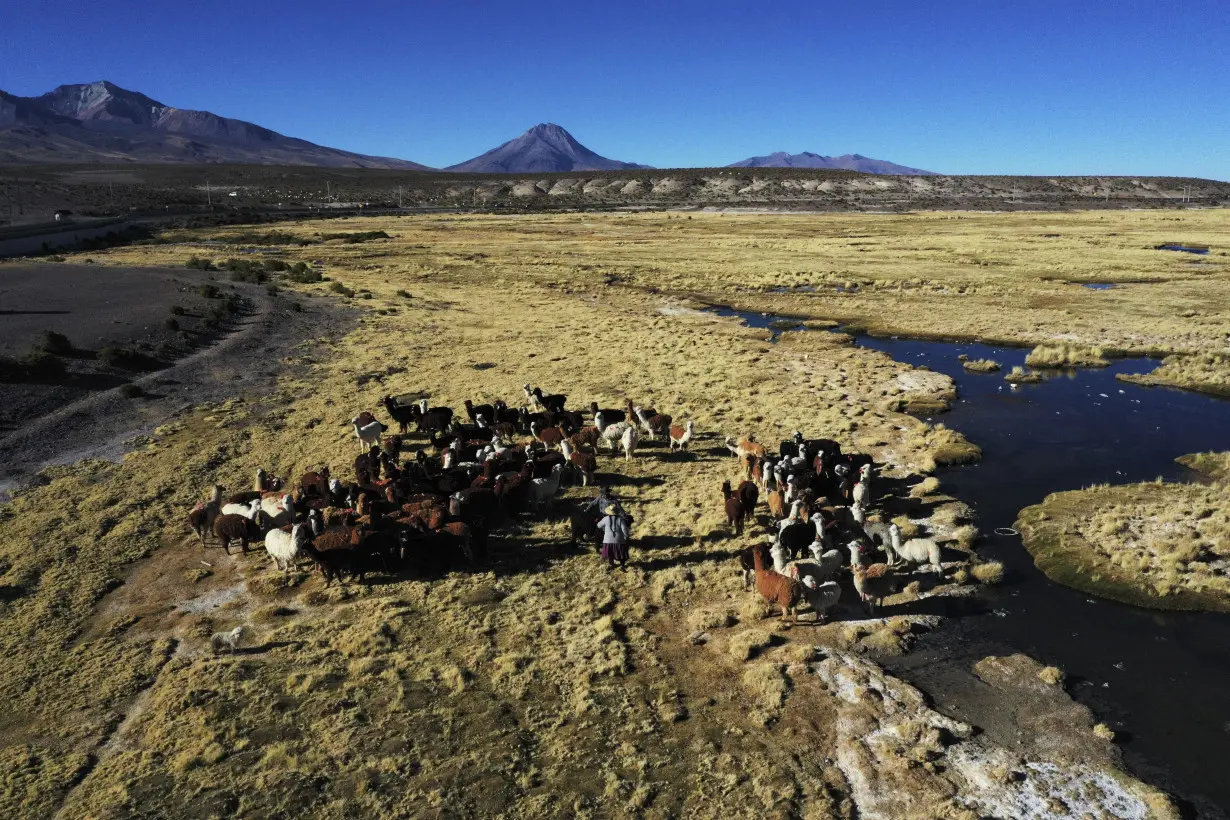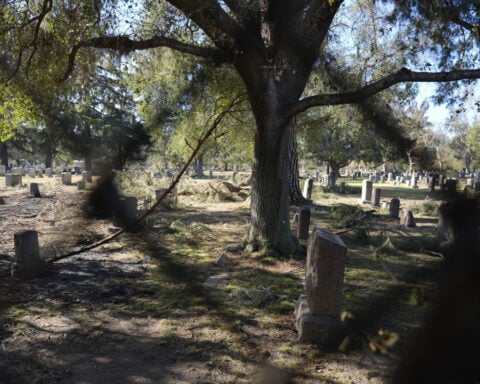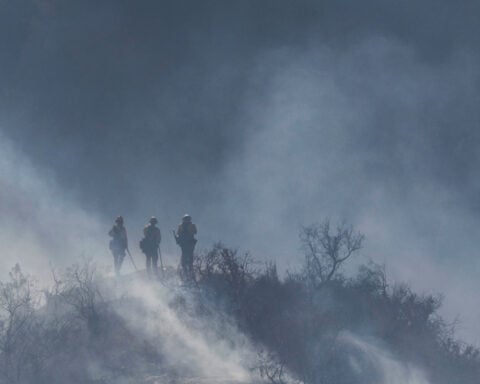COLCHANE, Chile (AP) — In northern Chile, Teófila Challapa learned to weave surrounded by the hills and sandy roads of the Atacama Desert.
“Spin the threads, girl,” her grandmother told her a half a century ago.
Aymara women like Challapa, now 59, become acquainted with wool threads under blue skies and air so thin that outsiders struggle to breathe. While herding llamas and alpacas through scarce grasslands 11,500 feet above sea level, they create their first textiles.
“We had no clothes or money, so we needed to learn how to dress with our own hands,” said Challapa, sitting next to fluffy alpacas outside her humble home in Cariquima, a town with fewer than 500 inhabitants near the Chile-Bolivia border.
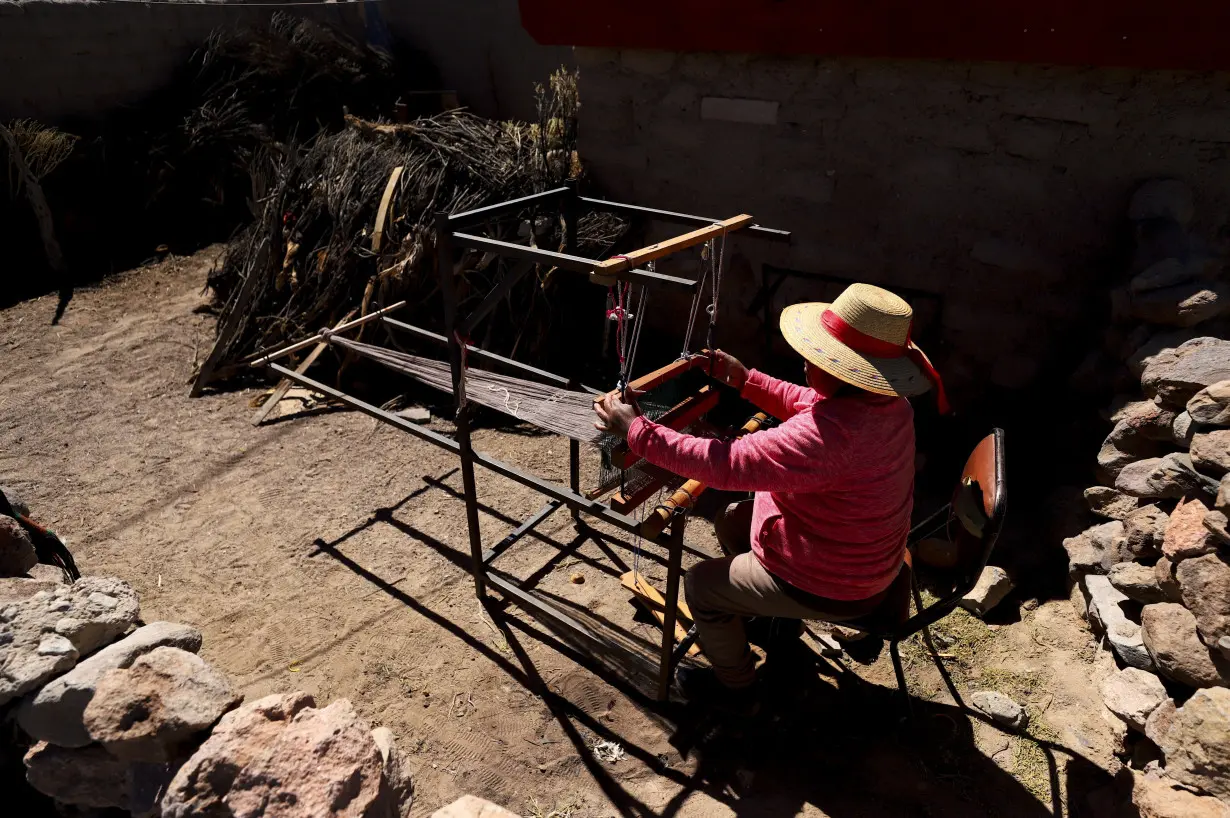
The knowledge of her craft passes on from one generation to another, securing Aymara families' bond with their land.
Challapa prays before beginning her work: “Mother Earth, give me strength, because you're the one who will produce, not me."
Among the 3 million Aymaras who live along the borders of Chile, Perú and Bolivia, the Earth is known as “Pachamama.” Homages and rituals requesting her blessings are intertwined in everyday life.

“I believe in God, but the Earth provides us with everything,” Challapa said.
Pachamama offers Challapa inspiration for her textiles, connections to ancestors and her cultural identity. It provides means for survival, too.
“My animals are my mother,” Challapa said.
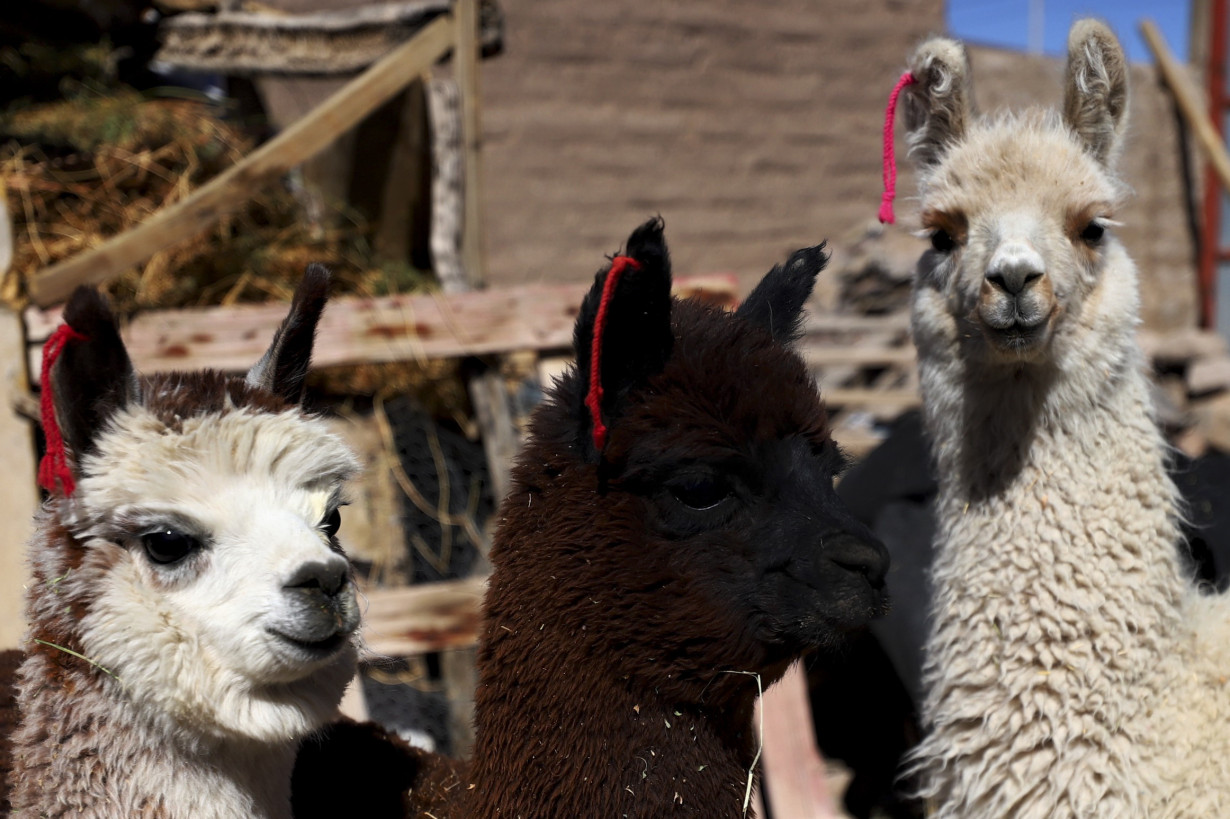
Her alpacas and llamas were a source of meat, wool and company during the tough years she spent raising her children as a single mother.
In the neighboring town of Colchane, Efraín Amaru and María Choque share their one-floor house with “Pepe,” an elegant white llama that flirts with visitors.
“To be an artisan, one must have the raw materials,” said Amaru, a 60-year-old descendant of Aymara craftsmen. His parents taught him how to raise camelids that produce the finest wool. “You have to communicate with your animals because they are part of you.”
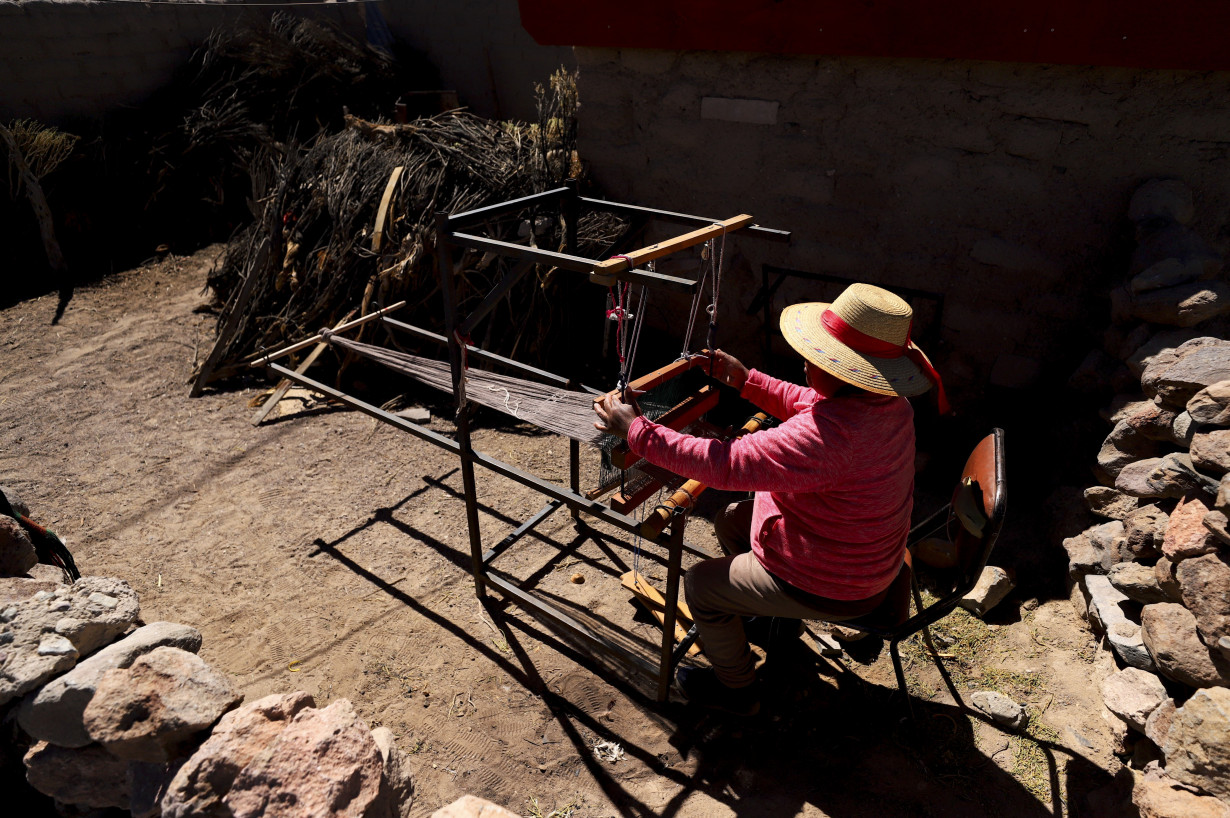
Ahead of Pachamama Day, on August 1, the couple prepared a ritual honoring Mother Earth. Over a mantle they weaved for the occasion, they placed grains from their crops and pieces of wool — among other objects they are grateful for — and asked for prosperity.
“We make offerings hoping for good seeds and crops, welfare for our animals and rain,” Choque said. “Then we turn to the moon and the stars. Our grandparents told us that those are the souls of our ancestors, who look at us from above.”
Choque learned how to turn wool into thread when she was six. Without toys to play with, Choque said she and her peers spent their days watching their elders weave — a demonstration of the craft and how to live fulfilling lives.
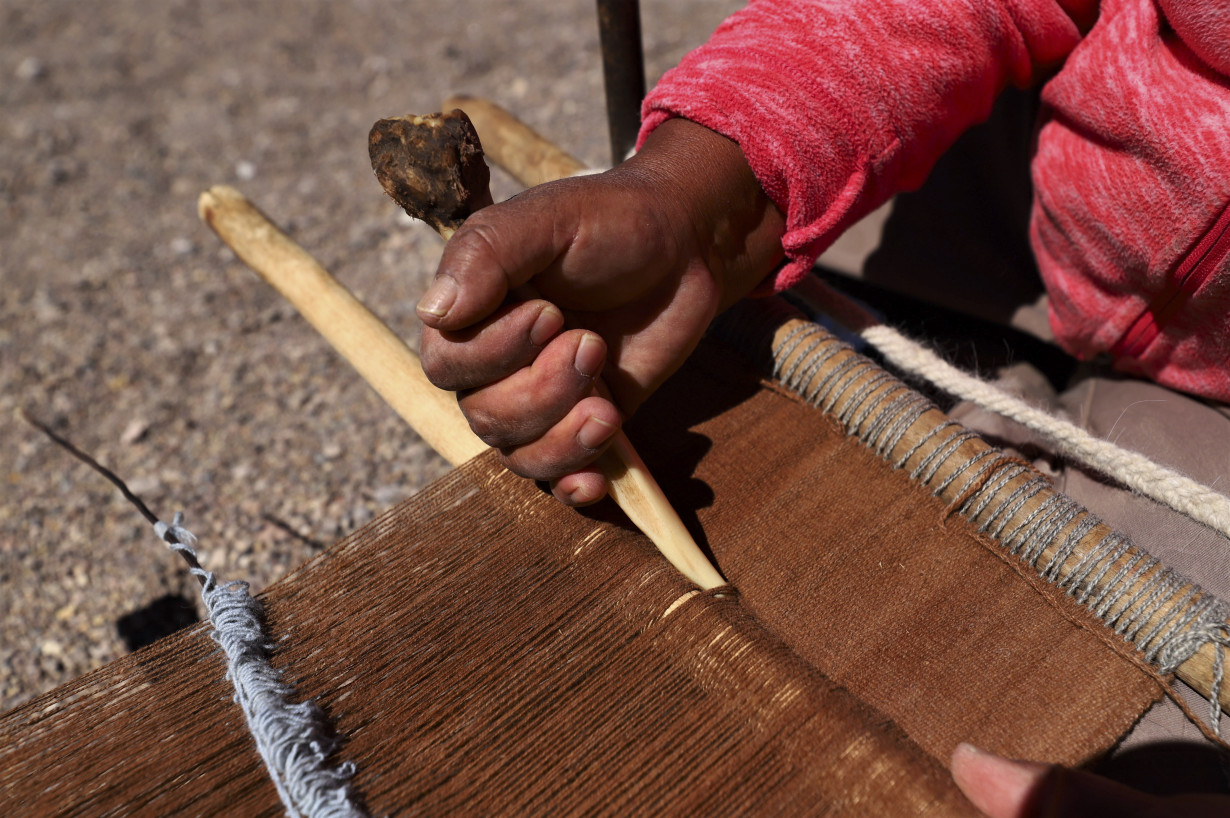
Her grandmother was her first teacher. After giving her a sewing needle, she taught Choque how to produce socks and hats. Vests and ponchos came after that.
Once a young disciple masters sewing needles, she moves on to weaving on looms. A few years later, she’ll face her utmost challenge: weaving her own “aksu,” the Aymara’s most precious and traditional garment.
“My aksu is not a suit,” Choque said. “It’s a part of me. When I was little, I wore mine daily, until I had to wear a uniform for school.”
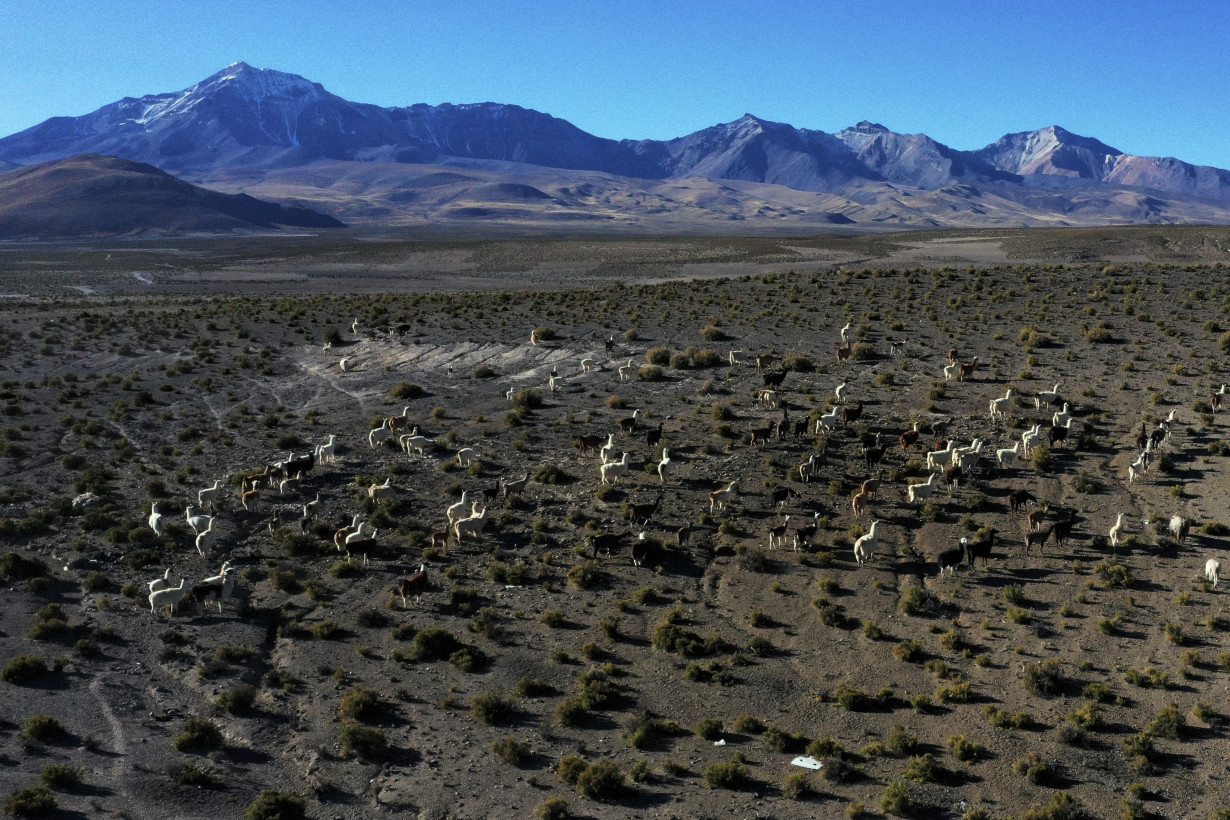
From wool production to fabric making, the entire textile-making process can take up to two years.
Aymara craftswomen shear their animals in October, when the weather is milder. Their llamas keep a few inches of wool to keep them warm and ready for the “floreo.” During this ancient ritual celebrated in February, Aymaras tie wool flowers and pompoms to their camelids identifying them as their property and thanking Pachamama for abundance.
Once the wool is collected and clean, craftswomen manipulate it with the tip of their fingers and pull threads out of it, creating skeins that are mounted on their looms for weaving.
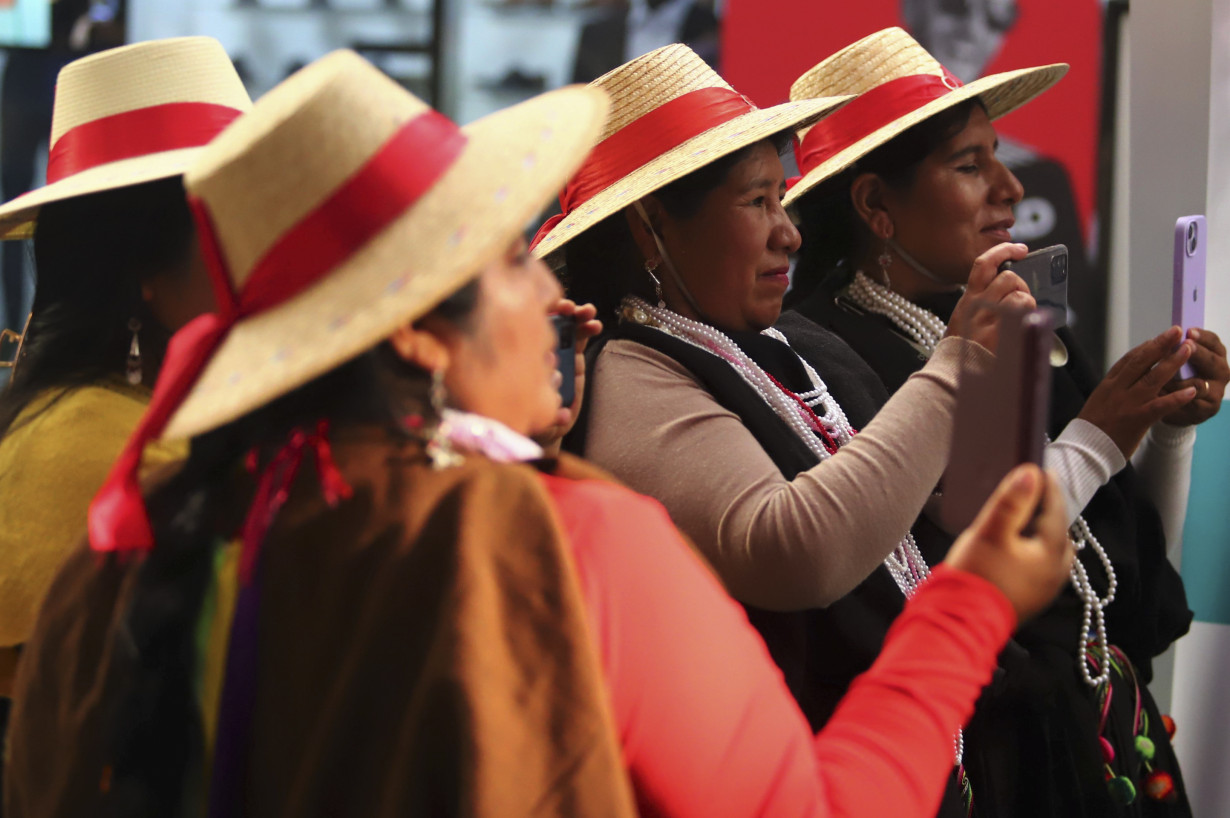
Through the income they made from the sale of their textiles, Aymara women like Challapa and Choque could afford to send their children off to school.
“I thank God because I always told myself: I don’t want them to be like me,” said Marcelina Choque (no relation to Maria), another craftswoman who lives in the town of Pozo Almonte. “This is my only profession. If I don’t sell, I have nothing.”
Progress, though, is bittersweet. “I taught my daughters how to weave just like me, but now that they have other jobs, they don’t weave anymore,” Marcelina Choque said.
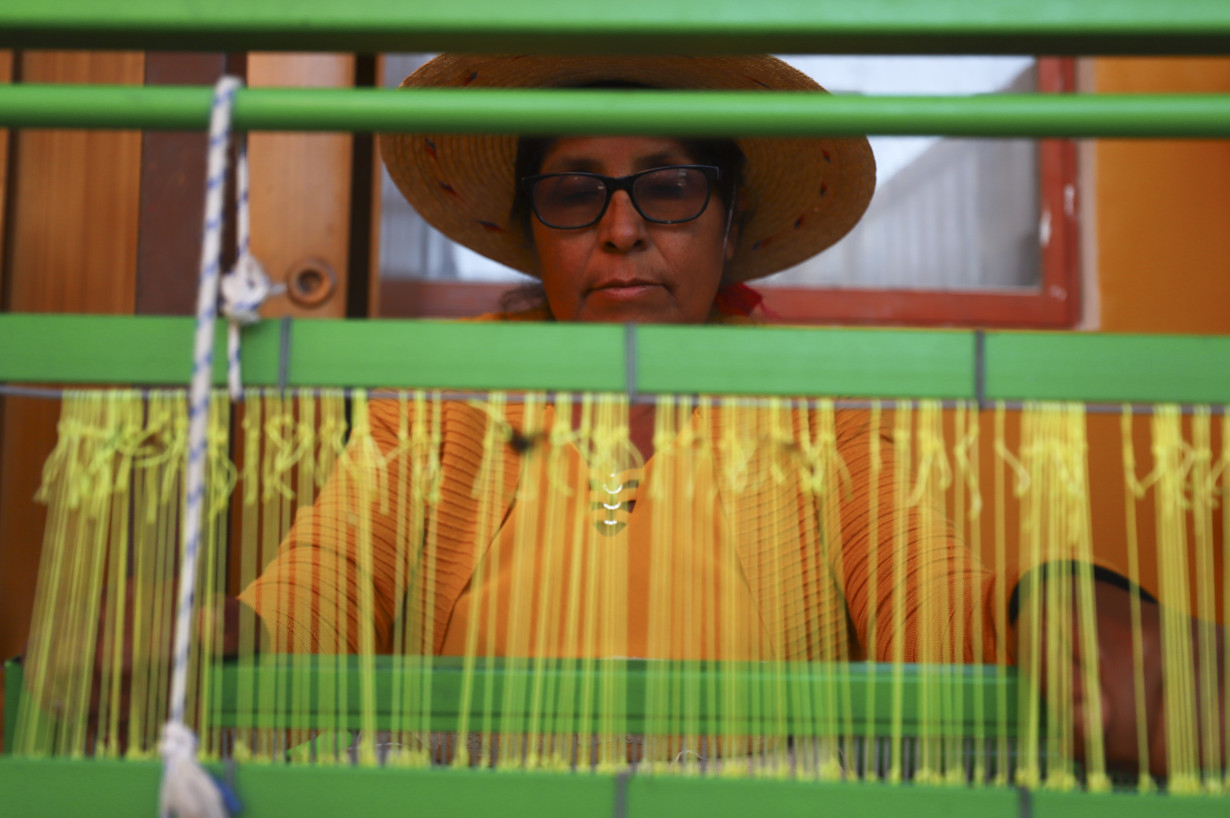
By moving away from their hometowns for study and work, several craftswomen agree their legacy might be in danger. Although they passed on their knowledge to their descendants, there are currently only a handful of young Aymara women who know how to use a loom.
“In rural areas, there is a significant migration of young people, and the population is aging,” said Luis Pizarro, who works at the Agricultural Development Institute of Chile. “Their grandparents are the ones who remain in the territories, so their cultural roots are severed.”
The institute supports rural development for Chilean communities linked to the Aymara culture, according to Pizarro. The goal is to boost camelid farming and craft sales through fairs, an online presence and special events.
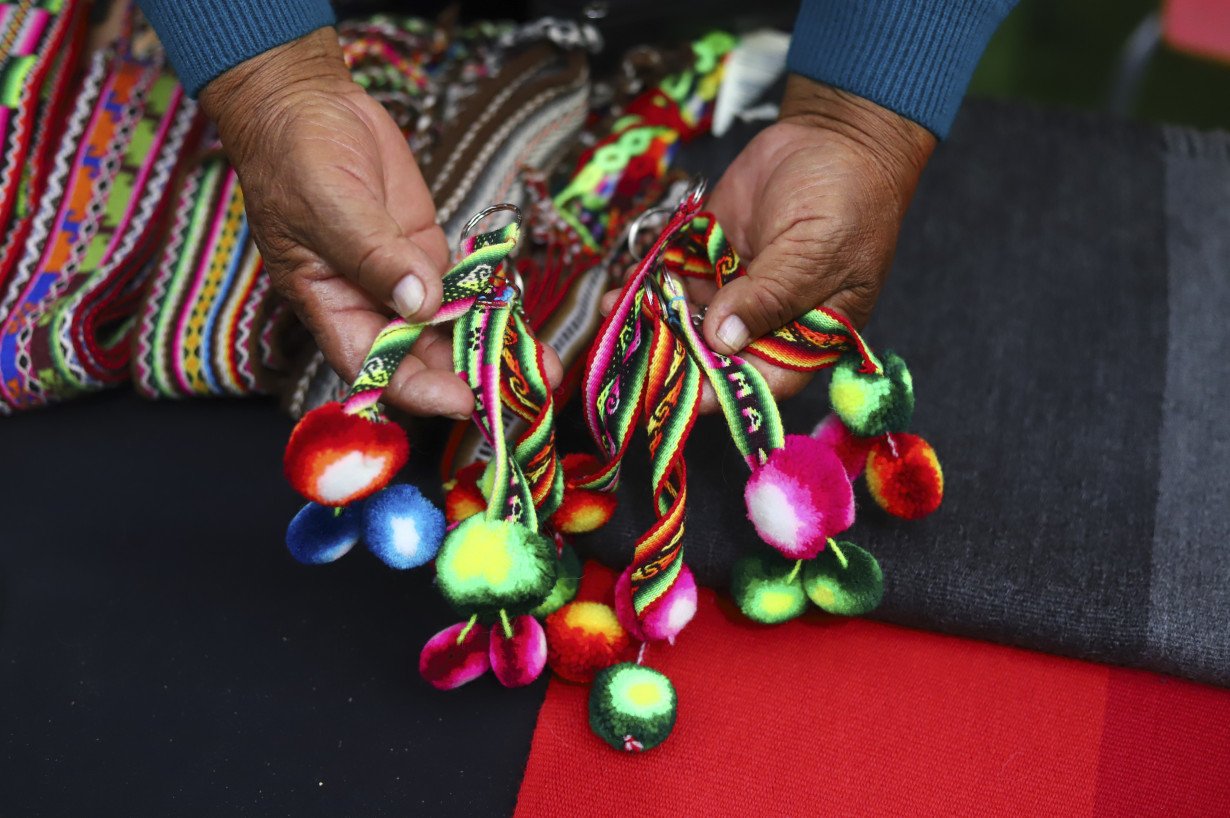
On a recent weekend, the institute held a fashion show inside a city shopping center in Iquique, where Teófila Challapa, María Choque and other women sold textiles and their daughters modeled their work.
“We try to get daughters and granddaughters of artisans involved in their cultural inheritance,” Pizarro said.
Nayareth Challapa (no relation to Teófila) speaks proudly about her mother, María Aranibar, who taught her how to pick the perfect weeds to dye wool.

“The colors of our textiles are related to nature: the earth, the sky, the hills. The land is sacred for us,” the 25-year old said. The work reflects craftswomen's moods and "the rheas, llamas, flowers and mountains she wants to keep present.”
She, too, moved to a city to attend university, but home is never far from her heart.
“When migrating, many forget their ethnicity and leave their roots behind,” Challapa said. “But my family tries to avoid that. We herd the llamas and raise crops to preserve what my grandfather taught us. If we were to lose that, we would lose him as well.”
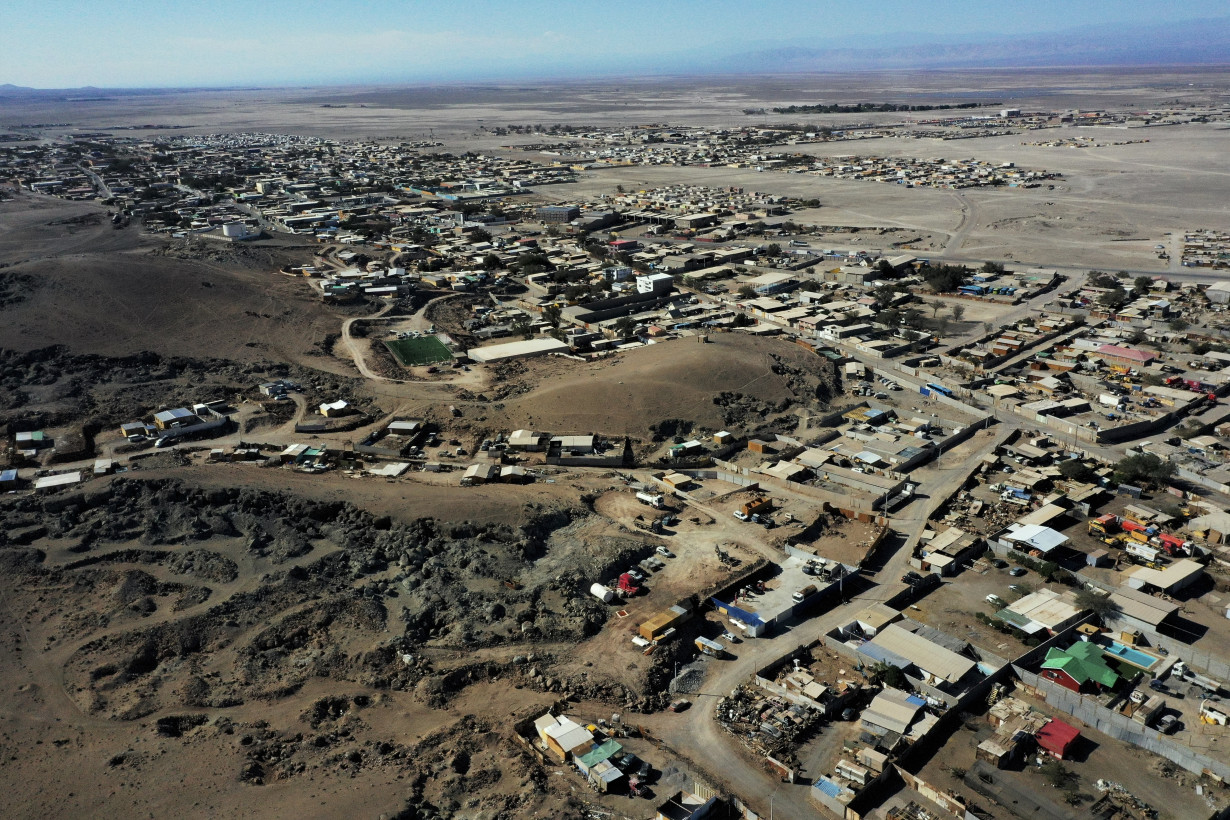
___
Associated Press religion coverage receives support through the AP’s collaboration with The Conversation US, with funding from Lilly Endowment Inc. The AP is solely responsible for this content.

 Republican bill seeks to curtail US FTC's merger-busting powers
Republican bill seeks to curtail US FTC's merger-busting powers
 UnitedHealth investors await details behind 2025 outlook after exec's murder
UnitedHealth investors await details behind 2025 outlook after exec's murder
 Texas online porn age-verification law goes to US Supreme Court
Texas online porn age-verification law goes to US Supreme Court
 Former Georgian prime minister hospitalised after beating, blames government
Former Georgian prime minister hospitalised after beating, blames government
 Mussolini's honorary doctorate subject of Swiss university exhibition
Mussolini's honorary doctorate subject of Swiss university exhibition
 Italy's public debt tops 3 trillion euros, highest on record
Italy's public debt tops 3 trillion euros, highest on record
 Overtourism was the buzzword of 2024. This summer looks to be just as crowded and chaotic
Overtourism was the buzzword of 2024. This summer looks to be just as crowded and chaotic
 Spain sees further tourism growth after record 94 million visitors in 2024
Spain sees further tourism growth after record 94 million visitors in 2024
